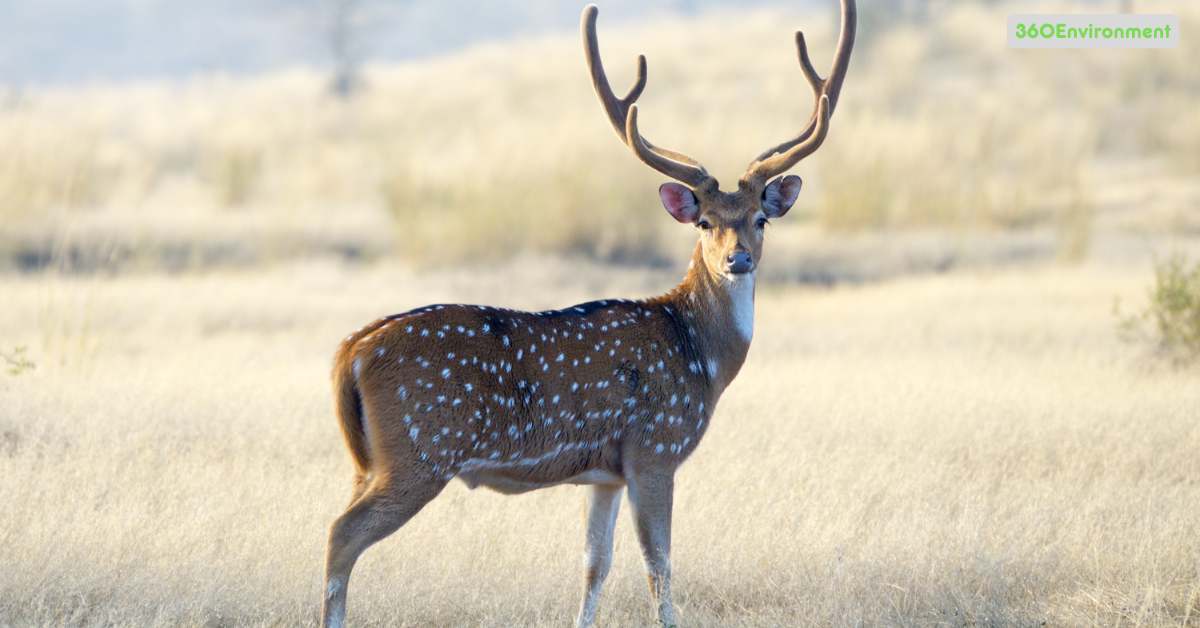The axis buck, also known as the chital (Axis axis), is a striking and graceful species of deer native to the Indian subcontinent. Distinguished by its distinctive spotted coat and elegant antlers, the axis buck plays an important role in its natural environment. In recent years, the species has also been introduced to various regions around the world, including the United States, where it has adapted to new habitats and ecological roles. This article explores the environmental niche of the axis buck, examining its habitat preferences, feeding behavior, reproductive strategies, interactions with other species, and its ecological impact on the ecosystems it inhabits.
1. Overview of the Axis Buck (Axis axis)
The axis buck is a member of the family Cervidae, which includes other species of deer, such as white-tailed deer and elk. Native to the forests and grasslands of India, Nepal, Bhutan, Sri Lanka, and Bangladesh, the axis buck is a social, herbivorous species that thrives in herds. Its natural habitats range from dense forests to open grasslands, where it finds an abundance of food and cover.
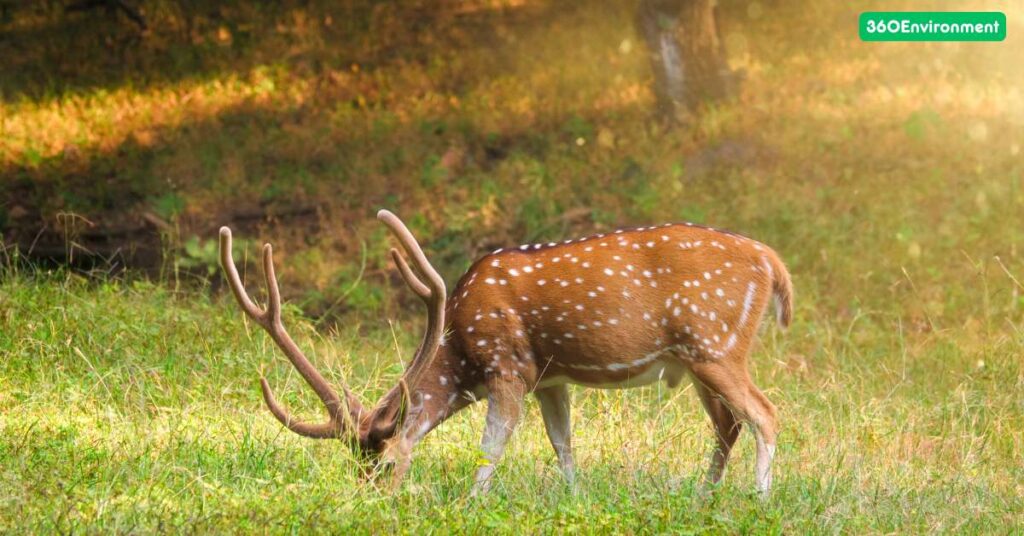
1.1 Taxonomy and Classification
- Kingdom: Animalia
- Phylum: Chordata
- Class: Mammalia
- Order: Artiodactyla
- Family: Cervidae
- Genus: Axis
- Species: Axis axis
The axis buck is one of the few deer species that retains its spots into adulthood, a feature that contributes to its distinct appearance. Adult males, known as bucks, are larger than females (does) and are notable for their impressive antlers, which typically have three tines. These antlers are shed and regrown annually, playing a crucial role in the species’ reproductive and social behavior.
2. Habitat and Geographic Distribution
The axis buck is highly adaptable and can thrive in a variety of environments, from tropical forests to savannas and agricultural landscapes. Its wide habitat range has made it a resilient species in its native range and has enabled it to thrive in regions where it has been introduced, such as the southern United States, Australia, and parts of Europe.
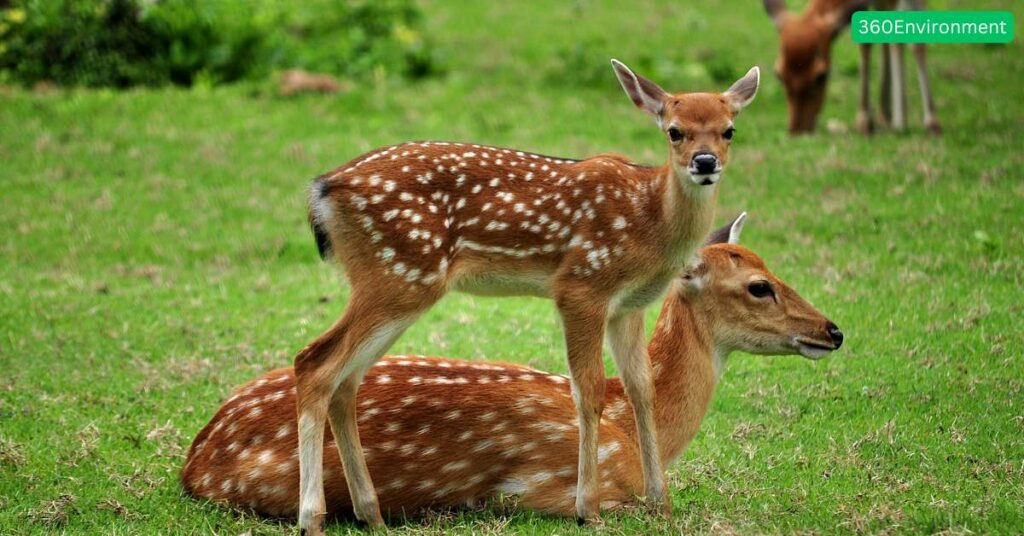
2.1 Native Habitat
In its native range, it is the most commonly found in dry deciduous forests, grasslands, and forest edges. It prefers habitats that provide a mix of open spaces for grazing and dense cover for protection from predators.
- Forests: In India and other parts of its native range, the axis buck is often associated with teak and sal forests, which provide ample shade, food, and protection. These forests support a variety of herbivores and carnivores, creating a dynamic ecosystem in which the axis buck plays a vital role.
- Grasslands and Agricultural Areas: The axis buck is also commonly found in open grasslands and agricultural fields, where it grazes on grasses and shrubs. In these environments, the species often coexists with livestock such as cattle, competing for resources but also benefiting from the presence of humans in some cases, as agricultural crops can provide additional food.
2.2 Introduced Habitats
The axis buck has been introduced to several regions outside its native range, including the United States (particularly Texas and Hawaii), Australia, and Europe. In these regions, the axis buck has adapted to new ecosystems, often thriving in areas where native deer species are absent or where it faces fewer natural predators.
- Texas: In Texas, it was introduced in the early 1900s and has since become a prominent game species. It thrives in the state’s grasslands, oak forests, and agricultural lands, where it competes with native species such as white-tailed deer. The lack of natural predators and the availability of food and water have allowed the axis buck population to grow significantly in this region.
- Hawaii: In Hawaii, the axis buck has become an invasive species, particularly on the islands of Maui and Lanai. The species has caused ecological damage by overgrazing native vegetation and competing with other herbivores for resources. Invasive species such as the it poses a significant threat to Hawaii’s delicate ecosystems, where native plants and animals have evolved in isolation from large herbivores.
3. Feeding Behavior and Dietary Preferences
As an herbivore, it plays a key role in shaping the structure of the vegetation in its habitat. Its feeding habits influence the composition of plant communities and affect the availability of resources for other herbivores and predators.
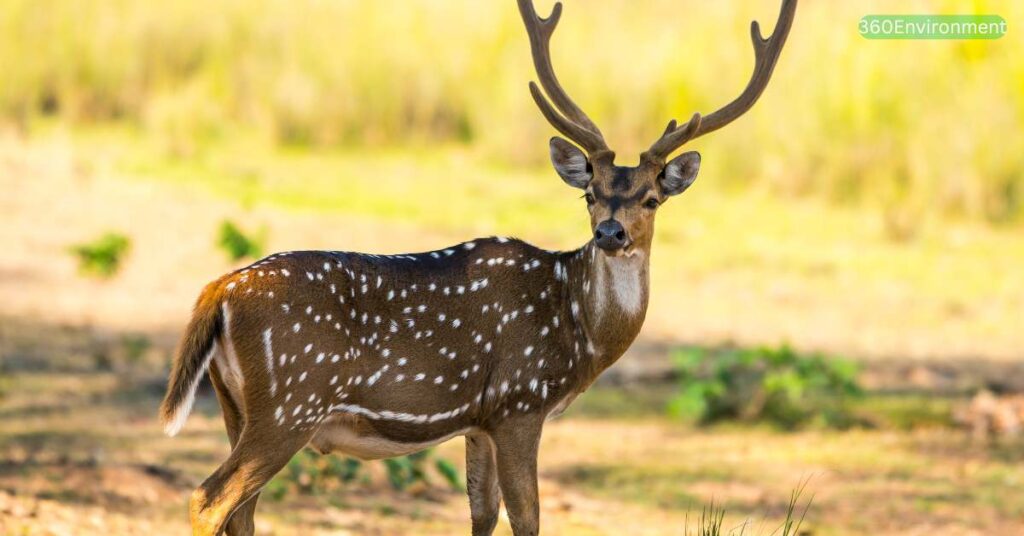
3.1 General Dietary Preferences
The axis buck is a mixed feeder, meaning that it consumes a variety of plant materials, including grasses, leaves, fruits, and twigs. Its diet is highly flexible and varies depending on the availability of resources in its environment.
- Grasses: In grassland environments, the axis buck primarily feeds on grasses, which provide essential nutrients for growth and reproduction. Grasses form the bulk of the axis buck’s diet, especially during the wet season when grasses are abundant.
- Browse: In forested environments, the axis buck supplements its diet with browse, which includes leaves, twigs, and fruits from trees and shrubs. This flexibility allows the species to thrive in a range of habitats, from open grasslands to dense forests.
- Seasonal Variation: The diet of the axis buck varies seasonally, with more grasses consumed during the rainy season and more browse consumed during the dry season when grasses become scarce.
3.2 Impact on Vegetation
The feeding behavior of the axis buck has a significant impact on the vegetation in its habitat. By selectively grazing on certain plant species, the axis buck influences the composition of plant communities and the availability of food for other herbivores.
- Grazing Pressure: In areas where axis buck populations are high, grazing pressure can lead to overgrazing, particularly in grasslands and agricultural fields. Overgrazing reduces the availability of grasses for other herbivores and can lead to soil erosion and habitat degradation.
- Seed Dispersal: The axis buck plays a role in seed dispersal, particularly for fruit-bearing plants. By consuming fruits and dispersing seeds through its feces, the axis buck helps to promote the growth of new plants and maintain plant diversity in its habitat.
4. Social Structure and Reproductive Behavior
The axis buck is a highly social species that lives in herds, often consisting of females, young deer, and a few adult males. The social structure of the species is closely tied to its reproductive behavior, with bucks competing for dominance during the mating season.
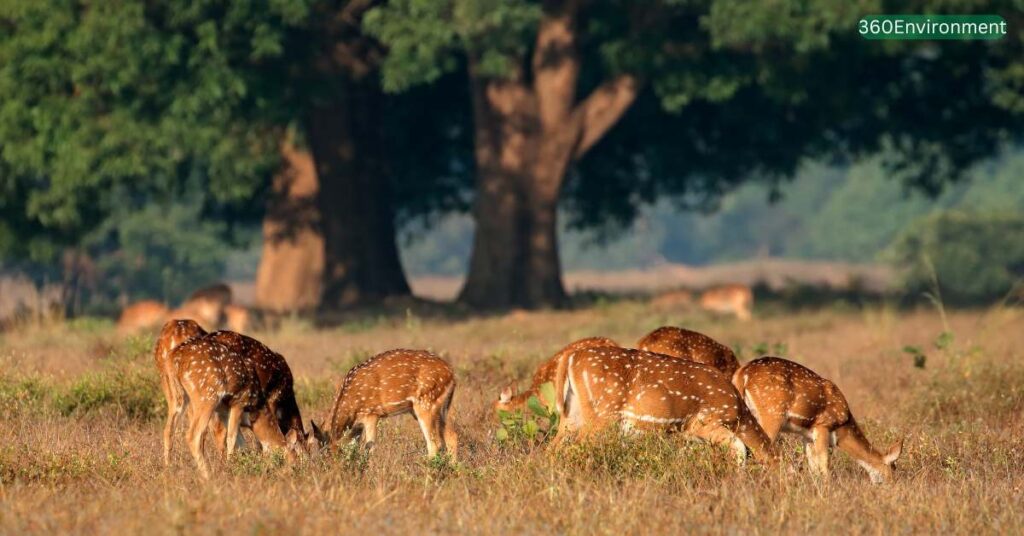
4.1 Herd Structure
Herds of axis deer are typically organized into small groups, with females and their offspring forming the core of the herd. Adult males, or bucks, may remain with the herd or form separate bachelor groups, depending on the time of year.
- Female-Centric Herds: Female axis deer, or does, and their young form the core of the herd. These groups provide protection from predators and increase the chances of survival for young deer.
- Bachelor Groups: Adult males often form bachelor groups outside of the breeding season. During the rut, or mating season, these groups break up as males compete for access to females.
4.2 Reproductive Behavior
The rut, or mating season, for axis bucks typically occurs during the late spring and early summer, although the timing can vary depending on environmental conditions. During this period, males engage in aggressive displays and fights to establish dominance and gain access to females.
- Antler Combat: Male axis bucks engage in antler combat during the rut, using their antlers to spar with other males. The largest and most dominant males are more likely to win these contests and gain access to females.
- Reproduction and Offspring: After mating, females give birth to one or two fawns after a gestation period of approximately seven months. Fawns are born with the same spotted coat as adults, providing them with camouflage in the grass and forest undergrowth.
5. Predators and Defense Mechanisms
In their native range, axis bucks are preyed upon by a variety of large carnivores, including tigers, leopards, and dholes (wild dogs). In regions where they have been introduced, such as the United States, their primary predators are humans, as natural predators like large carnivores are largely absent.
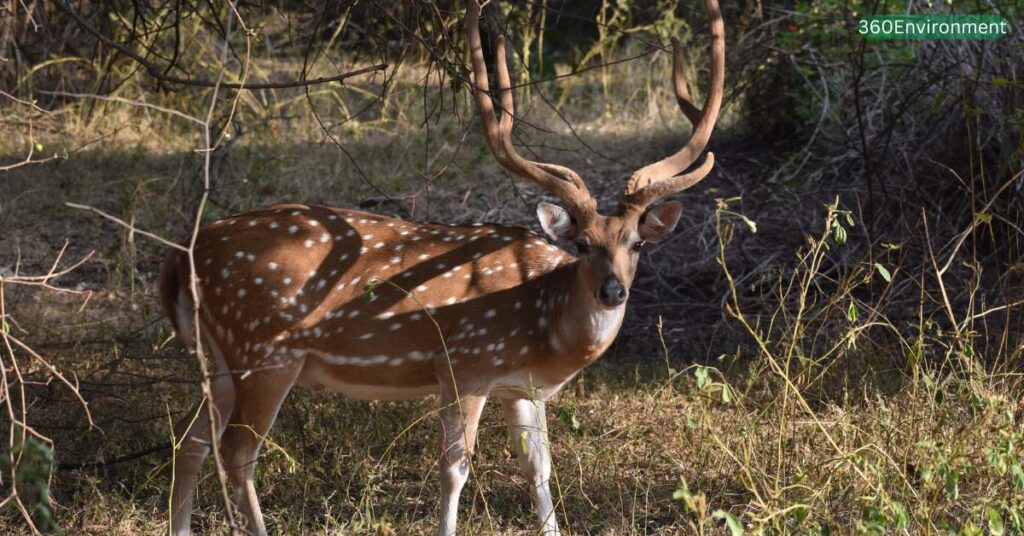
5.1 Natural Predators
In India and other parts of its native range, the axis buck is an important prey species for some of the largest predators in the region.
- Tigers: In regions where tigers still exist, they are one of the most significant predators of axis deer. Tigers rely on stealth and ambush tactics to catch axis deer, often targeting the young or weaker individuals.
- Leopards: Leopards are also common predators of axis bucks, especially in forested areas where leopards can use the dense cover to their advantage.
- Dholes: Packs of dholes, or wild dogs, are capable of bringing down adult axis bucks. Dholes use cooperative hunting strategies to chase and exhaust their prey before delivering a fatal bite.
5.2 Defense Mechanisms
The axis buck relies on a combination of vigilance, speed, and group behavior to avoid predators.
- Spotted Coat: The spotted coat of the axis buck provides excellent camouflage in the dappled light of forests and grasslands. This camouflage helps them blend into their surroundings and avoid detection by predators.
- Group Vigilance: Living in herds provides the axis buck with additional protection, as individuals take turns keeping watch for predators. When a predator is spotted, the herd will often flee together, making it more difficult for the predator to single out an individual.
- Speed and Agility: The axis buck is a fast and agile runner, capable of quickly fleeing from predators. Its long legs and streamlined body allow it to cover large distances at high speeds when necessary.
6. Ecological Role and Impact on Ecosystems
The axis buck plays a key role in shaping the structure of the ecosystems it inhabits. As a large herbivore, its feeding behavior influences plant communities, and its interactions with predators and other species contribute to the balance of its environment.
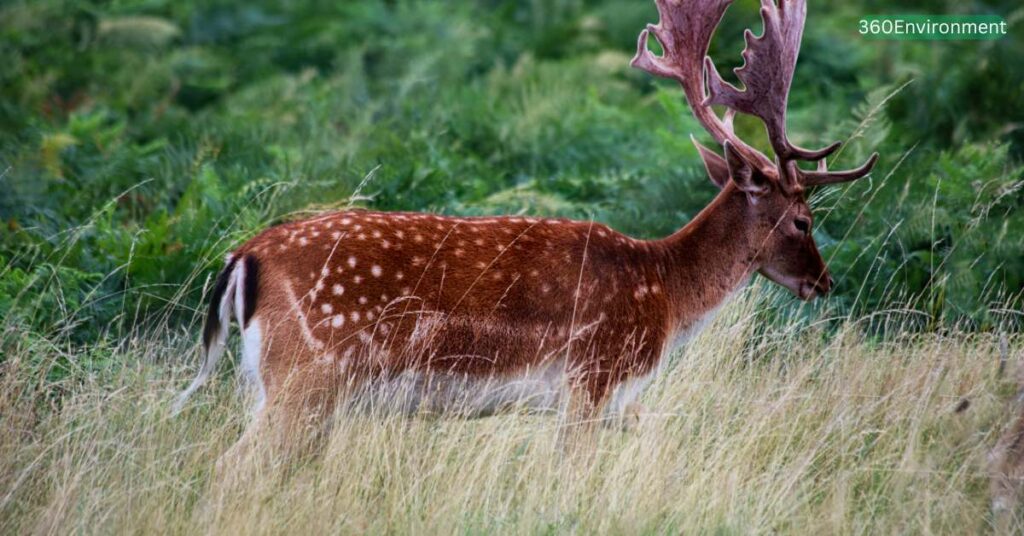
6.1 Keystone Species
In some ecosystems, the axis buck may function as a keystone species, meaning that its presence and behavior have a disproportionate impact on the structure of the ecosystem.
- Influence on Vegetation: By grazing on grasses and browse, the axis buck helps to maintain open grasslands and prevent the encroachment of woody plants. This grazing pressure can shape the composition of plant communities and create habitat for other herbivores and ground-nesting birds.
- Prey for Large Carnivores: In its native range, the axis buck is an important prey species for large carnivores. The presence of healthy axis buck populations supports predator populations, helping to maintain the balance of the food web.
6.2 Impact of Introduced Populations
In regions where the axis buck has been introduced, such as Texas and Hawaii, its impact on the environment has been more controversial. In some cases, the species has become invasive, outcompeting native herbivores and causing ecological damage.
- Invasive Species: In Hawaii, for example, the axis buck has become an invasive species, damaging native vegetation and threatening endemic plant species. The deer’s browsing behavior has altered the composition of plant communities, leading to erosion and habitat loss for native species.
- Competition with Native Species: In Texas, the axis buck competes with native deer species, such as the white-tailed deer, for resources. While both species can coexist in some habitats, competition for food and water can lead to declines in native deer populations.
7. Human Interactions and Conservation
The axis buck has a long history of interaction with humans, both in its native range and in regions where it has been introduced. The species is hunted for its meat and antlers, and in some regions, it is valued as a game species for sport hunting.
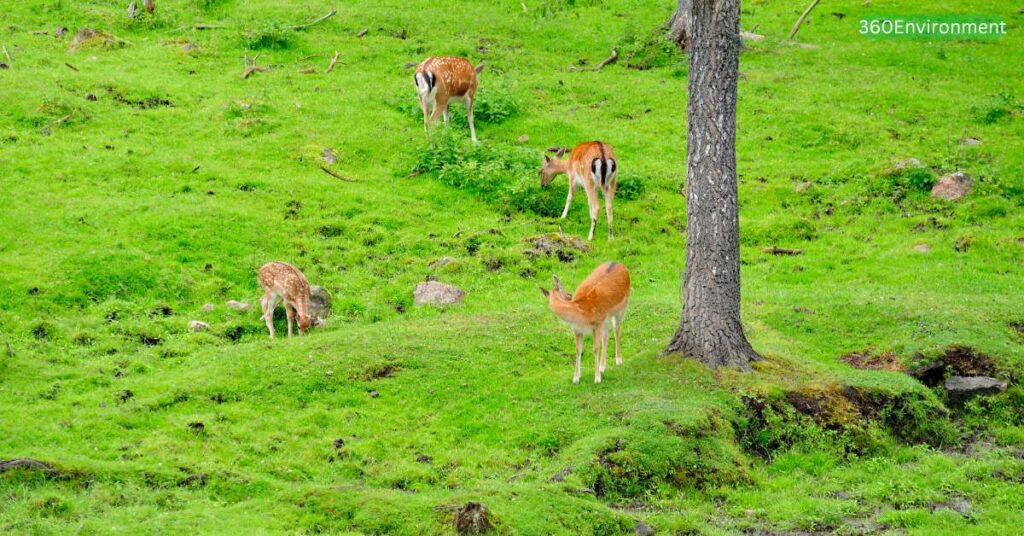
7.1 Hunting and Game Management
In many regions, the axis buck is an important game species, hunted for its meat, hide, and antlers. In Texas, for example, the axis buck is one of the most popular exotic game species, attracting hunters from around the world.
- Sport Hunting: In Texas, axis deer hunting is regulated through private ranches, where the species is managed as part of exotic game operations. These ranches often implement measures to ensure the sustainable management of deer populations.
- Hunting for Meat: Axis deer are also valued for their meat, which is leaner and lower in fat than the meat of domestic livestock. In some regions, hunting axis deer is an important source of protein for local communities.
7.2 Conservation Status
The axis buck is currently listed as “Least Concern” by the International Union for Conservation of Nature (IUCN), as its populations remain stable in much of its native range. However, habitat loss and hunting pressure in certain areas could pose a threat to local populations in the future.
- Habitat Conservation: Efforts to conserve the axis buck’s habitat, particularly in regions where forests and grasslands are under pressure from agriculture and urban development, are essential for ensuring the long-term survival of the species.
- Invasive Species Management: In regions where the axis buck has become invasive, such as Hawaii, efforts to control deer populations and protect native ecosystems are critical for preventing further ecological damage.
8. Conclusion
The axis buck, with its distinctive spotted coat and graceful antlers, is a species that occupies a unique and important niche in the ecosystems it inhabits. Whether grazing in the forests of India or roaming the grasslands of Texas, the axis buck influences the structure of its environment and interacts with a wide range of species, from predators to plants. While the species remains abundant in many regions, its impact on ecosystems, both positive and negative, highlights the need for careful management and conservation.
As human activities continue to shape the landscapes in which the axis buck lives, understanding the species’ ecological role and ensuring the sustainable management of its populations will be essential for maintaining the health and balance of the ecosystems it calls home.
Read More: African Animals with Horns: Icons of the Continent

